Introduction
In the now infamous SG Nasi Lemak case, it had been revealed that there were more than 44,000 members in its Telegram group at its peak, with numerous obscene (including upskirt) photos and videos being circulated in the group. Similarly, another Telegram group known as Sammyboy Forum was found to have around 25,000 members sharing voyeuristic content. Meanwhile, outside the realm of Telegram, there has been an increase in voyeuristic cases involving university students.
But what exactly constitutes voyeurism? Briefly, voyeuristic crimes defined under section 377BB of the Singapore Penal Code are those where a person intentionally observes (with or without an equipment), records, or operates equipment to allow others to observe (1) another person doing a private act without their consent; or (2) another person’s genital region, breasts if B is female, or buttocks (whether exposed or covered) in circumstances where the genital region, breasts, buttocks or underwear would not otherwise be visible without their consent. Based on this definition, common voyeuristic crimes include (but are not limited to) “peeping Tom” incidents where perpetrators observe or record their victims in private settings (e.g. bathing, changing clothes, using the toilet etc), the taking of upskirt videos, and the taking of sexual videos without the victim’s consent, all either for the perpetrator’s own consumption or distribution to others.
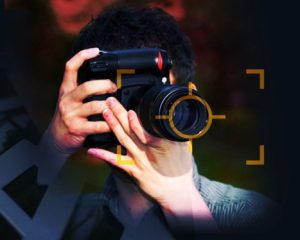
Image taken from: https://www.google.com/amp/s/www.thestar.com/amp/news/crime/2016/06/03/proving-sexual-intent-in-voyeurism-cases-a-challenge-for-courts.html
There is also a psychiatric definition for voyeurism. According to the Diagnostic and Statistical Manual of Mental Disorders, Fifth Edition (“DSM-V“) criteria, voyeurism is defined as “recurrent, intense and sexually arousing fantasies, sexual urges or behaviours” involving “observing an unsuspecting person who is naked, disrobing or engaging in sexual activity with or without their consent”. Do note, however, that a psychiatric diagnosis of voyeurism does not necessarily negate the legal consequences of the crime(s) committed.
Contrary to beliefs that voyeurism is not traumatic compared to other crimes such as rape or molest due to the lack of physical contact, it should be noted that voyeurism can cause emotional and psychological distress to victims as well. These effects can be long-term and can include a wide range of symptoms such as a fear of others, depression, anxiety, flashbacks, emotional numbness and denial. As such, it is important for the recent uptick in voyeurism to be treated seriously. To this end, it is crucial to understand why people commit voyeuristic crimes in order to find effective methods of prevention. 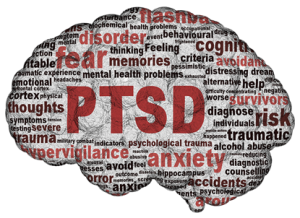
Image taken from: https://www.forbes.com/sites/toddessig/2015/12/02/post-traumatic-stress-disorder-ptsd-is-more-than-a-bad-story/?sh=687c977b621d
Inside the Mind of Voyeurs
The stereotypical image that most people have of voyeurs – such as being unsuccessful at getting the attention of people they find attractive, or having strange thoughts or behaviours – does not necessarily reflect reality. In fact, people who have admitted to such tendencies tend to lead ‘normal’ lives, and their intelligence, education, and employment have been found to be on par with the general population. However, some differences have been found between voyeurs and the general population.
Voyeurs tend to have more psychological problems and comorbid psychiatric disorders than the general population. Psychological factors such as low self-esteem, the avoidance from problems within their life, and maladaptive coping methods have been identified in voyeurs. This means that psychological/behavioural treatment such as Compassion Focused Therapy (CFT; Gilbert, 2010), Acceptance and Commitment Therapy (ACT: Hayes, Stroshl & Wilson, 2012), aversive conditioning, masturbatory reconditioning, covert sensitisation, assertiveness training, restitution therapy, and talking therapy can be useful in such offenders. However, the prognosis of such methods would depend largely on the offender’s willingness and desire to change as well as other personality factors.
With regards to psychological treatment, theories relating to voyeurism include: the sexual deviation theory, the conditioning theory, Bio-Psycho-Social model, the Love Map theory, and the Courtship Disorder Theory. The sexual deviation theory by Hocken & Thorne 2012 suggests that a “deviant sexual interest” (voyeurism) could be a factor alongside other contributing factors such as relationships issues, low self-esteem and antisocial beliefs that could increase an individual’s risk for committing a sexual offence, where the offences are triggered by situational factors such as experiencing life problems or availability of stimuli. The conditioning theory by Law and Marshall (1990) suggests that sexual interests are learned in the same way as other people learn sexual behaviour, and that individuals learn to secure sexual reinforcement through undetected illegal behaviours if the routes to “normal” sexual behaviours have been disrupted. A third theory by Mann and Carter (2012) involves the application of the Bio- Psycho-Social model to explain sexual offending being linked to biological factors such as low levels of 5-HT in the brain (Grubin 2008), foetal development in the neuro-hormonal environment in the womb (Cantor, 2011), and childhood trauma resulting in neurological impairment (Cantor et al., 2006). The Love Map by Money (1986) suggests that a love map is formed as a child develops, and damage to it through abnormal factors such as traumatic, inappropriate or unhealthy sexual experiences can ultimately create ‘atypical’ Love Maps which includes paraphilic and also voyeuristic Love Maps. Lastly, the Courtship Disorder Theory by (Freund, 1998) suggests that individuals with voyeuristic tendencies have disorders regarding the “finding phase [of courtship] – locating and appraising a potential partner”. These theories can help in identifying how best to treat offenders, whether psychologically and/or pharmacologically.

Image taken from: https://www.verywellmind.com/theories-of-love-2795341
Meanwhile, under the Bio-Psycho-Social model, comorbid psychiatric disorders more commonly found among people who have committed sexual offenses include major depressive disorder (MDD), Autistic spectrum disorder (ASD), substance use disorder, paraphilias, and intellectual disability (it should be noted that these are for sex crimes in general and not specifically to voyeurism). This may be related to the relationship between low levels of 5-HT (i.e. serotonin) with an increase in sexual behaviors (according to Grubun 2008 and Kafka 1997). It is known that lower levels of 5-HT can cause an inability to inhibit the compulsive behaviours found in some of the above-mentioned conditions, and low levels of 5-HT could also contribute to other conditions such as depression and anxiety (which is why serotonergic antidepressants such as SSRIs, SNRIs, TCAs, and MAOis could work in some of these psychiatric conditions). Furthermore, Abouesh and Clayton (1999) found that voyeurism has similar symptoms to obsessive-compulsive disorder (OCD), which is another condition associated with low levels of 5-HT. As such, besides psychological methods to help prevent voyeurs from re-offending through psychological counseling, there have also been studies on the roles of SSRIs (selective serotonin reuptake inhibitors) such as fluoxetine, paroxetine, sertraline, and fluvoxamine in the treatment of voyeurism which work by inhibiting the reuptake of serotonin by serotonin transporters (SERTs) at the presynaptic axon terminal which would allow more serotonin molecules to remain at the synapses.
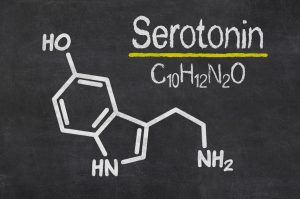
Image taken from: https://www.healthworkscollective.com/symptoms-serotonin-imbalances-need-know/
Several studies have also found that voyeurs tend to be males and the victims tend to be females. This has been suggested by experts to be related to misogyny and the objectification of women, as observing and recording women in intimate settings gives men a sense of power and control. An illustration on how misogyny and voyeurism could be related lies in the fact that voyeurism (or molka) is rampant in South Korea, a country where misogyny is a serious concern. This misogyny is unfortunately carried over to cases of voyeurism as well – in 2018, a petition with over 40,000 signatures was signed and a protest was held to call the Korean presidential Blue House to force the police to investigate all molka allegations seriously. While a woman was swiftly arrested and paraded in the media after she was found to have secretly filmed and posted a video of a nude male model during a university drawing class, most of the thousands of voyeurism offenders (of which 98% were male) were only made to pay a modest fine or even let off scot-free. Although Singapore’s situation is not as severe as South Korea’s, misogyny is still an issue in Singapore. For example, an Ipsos survey in 2019 on gender equality and sexual harassment found that 45 per cent of Singaporeans agree that women who wear revealing clothes should not complain if men make comments about their appearance, with this opinion being held equally among both genders – a rather concerning view with respect to the objectification of women, considering that this is a reason why some people commit voyeuristic acts.

Image taken from: https://www.thetimes.co.uk/article/women-victims-in-epidemic-of-spy-camera-voyeurism-8kxwgnw2k
Online platforms such as Telegram groups also further perpetuate this issue, such as by (1) giving voyeurs a feeling of power and control to be able to monitor women (which they consider as objects of desire) in the most intimate settings, thus enabling toxic masculinity; and (2) making voyeuristic content more appealing to members due to their seemingly passive role, which in turn normalizes and emboldens perpetrators to record more of such content. This seemingly passive involvement of voyeurism makes it more appealing compared to other sex crimes (such as exhibitionism) which have more active involvement, as revealed in a study by Thomas AG et al 2021. Yet, the involvement of recordings are “more intrusive on privacy than mere observation”, as stated in a court ruling in Canada, which could make such incidents even more traumatic to the victims. This could suggest that education on gender issues and consent (in both the areas of sex crimes and taking/sharing images or videos of others) could play a role in preventing cases of voyeurism in society.
Other tendencies observed more in voyeurs include: individuals having good relationships with their parents but the parents themselves having poor relationships between themselves (Gebhard et al 1965), with parents showing a lack of emotional expression, emotional distance, undemonstrativeness and lack of warmth (Rubins, 1969); coming from broken homes or being less likely to have sisters (Carnes 2001); higher incidence of separation from parents in childhood and sexual abuse before the age 18 (Långström and Seto 2006); and having higher rates of unusual fantasies, including bestiality and sadomasochism (Smith 1976). It has also been noted that problematic sexual behaviours often began in adolescence with more than 50% reporting voyeuristic desires before the age of 15 (Kaplan & Krueger, 1997; Mathis, 1972).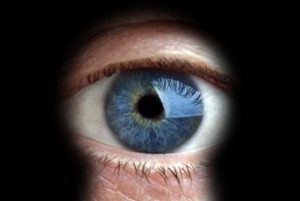
Image taken from: https://criminallawyer-singapore.sg/voyeurism-377bb/
Combating Voyeurism
Policy changes have been made to better protect victims of voyeurism. Previously, voyeuristic crimes were covered under Section 509 ‘Insulting the Modesty of a Woman’ of the Penal Code and Section 29 and 30 of the Films Act. However, the drawbacks of these provisions were that only obscene films in a person’s possession were considered, and victims were required to be women. These were changed with the addition of Section 377BB of the Penal Code with effect from 1 January 2020, which now covers the observation and/or recording (with any sort of equipment) of obscene contents, and is gender-neutral towards victims.
While there are many ways to reduce the incidence of voyeuristic crimes, one of the most important things is for victims to speak up and report the crimes to the police. This could deter future offenders from committing such crimes, raise awareness of voyeurism, and empower other victims to come forward. A well-known example would be that of Monica Baey, who spoke up about what had happened to her and brought to light the issue of voyeurism, the initially modest punishment to the offender, and the psychological effects she had experienced due to the incident. While an ideal situation would be for victims to speak up, under-reporting still occurs due to the fear of not being believed, according to the Ipsos 2019 gender equality and sexual harassment survey. This is further substantiated by the revelation that 41% of all Singaporeans agree or strongly agree that false accusations of sexual harassment are a bigger problem in our society than unreported acts of sexual harassment, despite global reports that the incidences of false reporting is around just 2%.

Image taken from: https://vannormanlaw.com/rule-law-vs-rule-law/
Conclusion
In conclusion, while cases of voyeurism have been on the rise in recent years – perhaps due to technology being a contributing factor – awareness of it has also increased throughout the years. However, awareness alone is insufficient for prevention, and much more needs to be done to put a stop to cases of voyeurism. While promoting better understanding of its causes and legal and/or policy interventions by the government can help, society as a whole would need to play a part a well.
*The views and opinions expressed in this article do not constitute legal advice and solely belong to the author and do not reflect the opinions and beliefs of the NUS Criminal Justice Club or its affiliates.
References
- A. & Clayton, A. (1999). Compulsive Voyeurism and Exhibitionism: A Clinical Response to Paroxetine. Archives of Sexual Behaviour, 28 (1), 23-30.
- American psychiatric association, 2013. Diagnostic and statistical manual of mental disorders: DSM-5. DS American Psychiatric Association, American Psychiatric Association.
- Cantor, J.M. (2011). Brain Research and Pedophilia. Paper presented at 30th Annual Conference of the Association for the Intervention of Sexual Abusers, Toronto, Canada.
- Cantor, J. M., Kuban, M. E., Blak, T., Klassen, P. E., Dickey, R., & Blanchard, R. (2006). Grade failure and special education placement in sexual offenders’ educational histories. Archives of Sexual Behavior, 35, 743–751.
- Carnes, P.J. (2001). Cybersex, Courtship and Escalating Arousal: Factors in Addictive Sexual Desire. Sexual Addiction and Compulsivity 8: 1 45-78.
- Duff S (2018). Voyeurism: A Case Study. Springer Nature Switzerland AG 2018.
- Dwyer, M. (1997). Intervention outcome study: Seventeen years after sexual offender intervention. Sexual Abuse: A Journal of Research and Intervention, 9, 149-160.
- Freund, K. (1988). “Courtship disorder: Is the hypothesis valid?” Annals of the New York Academy of Sciences, 528, 172–182.
- Gebhard, P. H., Gagnon, J.H., Pomeroy, W. B., & Christenson, C. V. (1965). Sex Offenders. New York: Harper & Row.
- Gilbert P, Procter S. (2005). Compassionate mind training for people with high shame and self-criticism: Overview and pilot study of a group therapy approach. Clinical Psychology Psychotherapy, 13:353–79.
- Greenberg DM et al (1996). A Comparison of Treatment of Paraphilias with Three Serotonin Reuptake Inhibitors: A Retrospective Study. Bull Am Acad Psychiatry Law, Vol. 24, No. 4.
- Grubin, D. (2008). Medical models and interventions in sexual deviance. In D.R. Laws, & W.T. O’Donohue (Eds). Sexual deviance: Theory, assessment and intervention (pp.594-610). London: Guilford Press.
- Hayes, S.C, Strosahl, K.D., & Wilson, K.G. (2012). Acceptance and commitment therapy: The process and practice of mindful change (2nd Ed). New York, NY: The Guilford Press.
- Hocken, K & Thorne, K. (2012). Voyeurism, Exhibitionism and Other Non-Contact Sexual Offences. In B. Winder, B & P Banyard (Eds). A Psychologist’s Casebook of Crime: From Arson to Voyeurism. Houndsmill, UK: Palgrave Macmillin.
- Ipsos (7 March 2019). Gender Equality, Sexual Harassment and the #MeToo movement in Singapore. https://www.ipsos.com/en-sg/gender-equality-sexual-harassment-and-metoo-movement-singapore
- Kafka, M. P. (1991). Successful anti-depressant intervention of non paraphilic sexual addictions and paraphilias in men. Journal of Clinical Psychiatry, 52 (2) 60- 65.
- Kafka, M. P. (1994). Sertraline pharmacotherapy for paraphilias and paraphilia- related disorders: An open trial. Annals of Clinical Psychiatry, 6, 189-195.
- Kafka, M. P. (1997). A Monoamine Hypothesis for the Pathophysiology Of Paraphillic Disorders. Archives of Sexual Behaviour. 26. 343-358.
- Kaplan, M.S. & Kreuger, R. B. (1997). Voyeurism: Psychopathology and theory. In D. R. Laws and W. O’Donohue (Eds.), Sexual deviance: Theory, Assessment and Intervention. New York: Guilford Press.
- Mato Kotwani and Sashni Chevlam (21 December 2021). Changes to the Sentencing Framework for Voyeurism Offences in Singapore. https://www.pdlegal.com.sg/changes-to-the-sentencing-framework-for-voyeurism-offences-in-singapore/
- Laws, D.R & Marshall, W.L. (1990). A conditioning theory of the etiology and maintenance of deviant sexual preferences and behaviours. In W. L Marshall, D.R Laws, & H.E Barbaree (Eds). Handbook of sexual assault: Issues, theories and intervention of the offender (pp.209227). New York. Plenum Press
- Lydia Lam (24 January 2022). Sammyboy Forum Telegram group member gets jail and fine, had more than 17,000 obscene videos. https://www.channelnewsasia.com/singapore/sammyboy-forum-telegram-group-member-jail-fine-obscene-videos-2455891
- Långström, N., & Seto, M. (2006). Exhibitionistic and Voyeuristic Behaviour in a Swedish National Population Survey. Archives of Sexual Behaviour, 35, 427-435
- Justin McCurry (3 July 2018). ‘A part of daily life’: South Korea confronts its voyeurism epidemic. The Guardian. https://www.google.com/amp/s/amp.theguardian.com/world/2018/jul/03/a-part-of-daily-life-south-korea-confronts-its-voyeurism-epidemic-sexual-harassment
- Mann, R.E. & Carter, A J. (2012). Some proposed organising principles for the treatment of sexual offending. In B. Wischka, W. Pecher & H. van der Boogaart (Eds)., Behandlung von Straftätern: Sozialtherapie, Maßregelvollzug, Sicherungsverwahrung [Offender treatment: Social Therapy, Special Forensic Hospitals, and Indeterminate Imprisonment]. Centaurus.
- Money, J. (1986). Love Maps – Clinical Concepts of Sexual/Erotic Health and Pathology, Paraphilia, and Gender Transpostition in Childhood, Adolescence, and Maturity. New York: Prometheus Books.
- Omer Khan et al (2009). Pharmacological interventions for those who have sexually offended or are at risk of offending. The Cochrane Database of Systematic Reviews.
- Singapore Attorney-General’s Chambers. Singapore Statutes Online: Section 377BB.
- Smith, R.S. Voyeurism: A review of literature. Arch Sex Behav 5, 585–608 (1976).
- David Sun (9 March 2021). SG Nasi Lemak chat admin jailed and fined; had more than 11,000 obscene photos and videos. The Straits Times. https://www.straitstimes.com/singapore/courts-crime/sg-nasi-lemak-admin-jailed-and-fined-had-more-than-11000-obscene-photos-and
- Kristen Thomason and Susie Dun (25 February 2019). Court ruling on voyeurism could have broad social impact. https://policyoptions.irpp.org/fr/magazines/february-2019/court-ruling-voyeurism-broad-social-impact/
- Thomas AG et al (2021).Sex Differences in Voyeuristic and Exhibitionistic Interests: Exploring the Mediating Roles of Sociosexuality and Sexual Compulsivity from an Evolutionary Perspective. Arch Sex Behav. 2021; 50(5): 2151–2162. https://www.ncbi.nlm.nih.gov/pmc/articles/PMC8275528/
- Wong Pei Ting (27 April 2019, last updated 28 August 2020). The Big Read: Singapore’s voyeurism problem – what’s wrong with men, or the world? Today Online. https://www.todayonline.com/big-read/big-read-singapores-voyeurism-problem-whats-wrong-men-or-world
Author’s biography
Celine Cheow is a recent graduate from NUS Pharmacy. Besides toxicology, she is also interested in forensic psychology and psychiatry as well.



 Celine Cheow is a recent graduate from NUS Pharmacy. As a project manager of the forensic toxicology team in CJC-F in AY21/22, she guides the team with her knowledge of drugs, and edits articles relating to forensic toxicology.
Celine Cheow is a recent graduate from NUS Pharmacy. As a project manager of the forensic toxicology team in CJC-F in AY21/22, she guides the team with her knowledge of drugs, and edits articles relating to forensic toxicology.  Wong Wai Xin is a 3rd Year Undergraduate from NUS Chemistry. She is interested in practical applications of Chemistry in everyday life, and aspires to join the Ministry of Education as a teacher after graduation.
Wong Wai Xin is a 3rd Year Undergraduate from NUS Chemistry. She is interested in practical applications of Chemistry in everyday life, and aspires to join the Ministry of Education as a teacher after graduation. 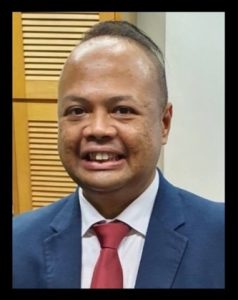
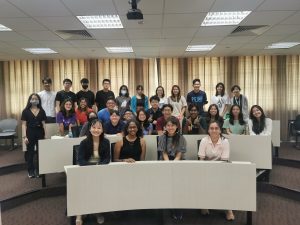

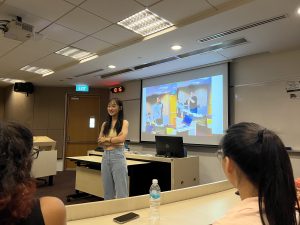

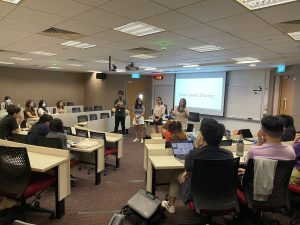

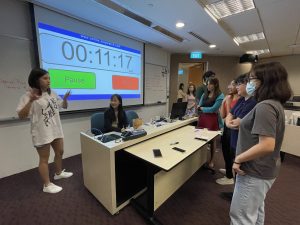
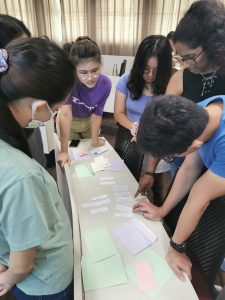

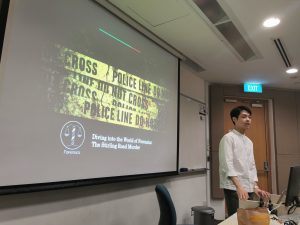
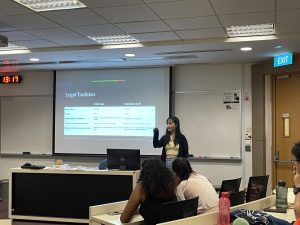
 Avanti Balaji (Year 2 Psychology Major)
Avanti Balaji (Year 2 Psychology Major)
 Wahab (“Zee”) is a Sophomore at the SUSS School of Law and also serves as a Doping Control Officer with Anti-Doping Singapore. He looks forward to practising Community Law (Criminal, Family and Sports Law) when called to the Bar. Concurrently, serves as President of the Asian Law Students Association S’pore (ALSA SG) and strives for greater interaction and collaboration between students from the 3 Law Schools in Singapore. This is his first published article.
Wahab (“Zee”) is a Sophomore at the SUSS School of Law and also serves as a Doping Control Officer with Anti-Doping Singapore. He looks forward to practising Community Law (Criminal, Family and Sports Law) when called to the Bar. Concurrently, serves as President of the Asian Law Students Association S’pore (ALSA SG) and strives for greater interaction and collaboration between students from the 3 Law Schools in Singapore. This is his first published article. Alyssa Phua is a fourth year NUS undergraduate pursuing her double degree in Law and Business. As a strong believer in the need to promote greater appreciation of forensic evidence, she founded CJC Forensics (CJC-F) in 2020. As the director of CJC-F, she directs, coordinates and oversees all activities, events and projects.
Alyssa Phua is a fourth year NUS undergraduate pursuing her double degree in Law and Business. As a strong believer in the need to promote greater appreciation of forensic evidence, she founded CJC Forensics (CJC-F) in 2020. As the director of CJC-F, she directs, coordinates and oversees all activities, events and projects.